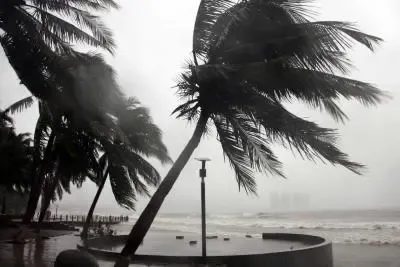What Impact Did Severe Tropical Storm Wipha Have on the Philippines?

Synopsis
Key Takeaways
- Wipha intensified as it exited the Philippines, affecting thousands.
- Warnings issued for stronger local winds in exposed areas.
- The storm could reach typhoon status by Sunday.
- Authorities are monitoring the situation closely.
- Preparation and resilience are crucial for affected communities.
Manila, July 19 (NationPress) The severe tropical storm Wipha has transformed into a more intense system as it departed from the Philippines on Saturday, unleashing powerful winds and heavy rainfall across numerous regions, including Metro Manila.
In a weather bulletin released on Saturday morning, the Philippine state weather bureau, PAGASA, indicated that Wipha exited the Philippine Area of Responsibility at 10 AM local time.
The storm is projected to continue its west-northwest trajectory toward southern China. Predictions suggest that Wipha may further intensify and potentially escalate to typhoon status by Sunday afternoon or evening.
According to the bulletin, the wind signals alert the public about the general wind threat posed by the tropical cyclone. Localized winds could be slightly stronger or enhanced in coastal and mountainous regions exposed to these winds.
The National Disaster Risk Reduction and Management Council reported on Saturday morning that approximately 96,791 individuals nationwide have been impacted by Wipha, which has resulted in flooding and landslides in various regions, as reported by Xinhua.
Additionally, two individuals have been reported missing, according to the Philippine agency.
In November of the previous year, the Philippines faced a similar situation when hundreds of thousands of residents from coastal and flood-prone areas were evacuated in preparation for the super typhoon Man-yi.
Man-yi, with maximum winds reaching 195 km/h and gusts up to 240 km/h, made landfall in Catanduanes in the Bicol region of Luzon, Philippines.
This storm struck areas already battered by five overlapping typhoons since late October, resulting in over 160 fatalities due to flooding and landslides caused by the severe weather, as per government statistics.
The relentless rainfall displaced millions and devastated crops and infrastructure. Several provinces declared a state of calamity due to the extensive damage.
Locally referred to as Pepito, Man-yi was the 16th tropical cyclone to affect the Philippines in 2024.
On average, the Philippines experiences around 20 typhoons annually, which bring torrential downpours, fierce winds, and deadly landslides.










